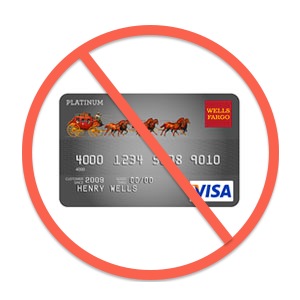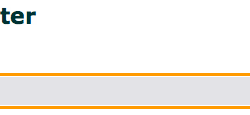It’s time for one of these again. I like the idea of turning it into a semi-regular series, if that’s possible. So if you have a deceptive deal to share, send me an email!
The three kings of flexible bank rewards points are Chase (Ultimate Rewards), American Express (Membership Rewards), and Citi (ThankYou). These programs allow you to earn generic points when charging purchases to your card that can later be used to book “any” ticket through their respective travel agencies. By “any” I mean most of the flights you would find through an online travel agency like Expedia or Orbitz, but excluding tickets with Southwest or other carriers that withhold their fares from the Global Distribution Systems (GDSs).
The Good Guys
Points in each program are worth a fixed amount, so the cost of your ticket in points depends on the cost in cash. Ultimate Rewards points are worth 1.2 cents per point, ThankYou points are worth 1.33 cents per point, and Membership Rewards points are worth 1 cent per point (if you have Business Platinum Card from American Express, then you get a 20% rebate, for a value of 1.25 cents per point). Most programs have no fees or limits, but Membership Rewards does impose a 5,000-point minimum redemption and a processing fee of a little under $10 per ticket. In all three programs, people who do not have enough points can charge the remaining amount to their card.
All three programs also allow you to transfer the points to other loyalty programs instead. This is usually a better deal. I can transfer Ultimate Rewards points to United Airlines miles, which I value at 2 cents per mile if I use them for an award. Sure, an ordinary ticket doesn’t have the blackout dates and availability issues, but I have to accept a 40% devaluation if I redeem them with Chase instead of United.
Both Ultimate Rewards and Membership Rewards have lots of good transfer partners. ThankYou only recently added Hilton as its first transfer partner, and they have the best rate for booking tickets, so historically this is the only program I’ve used for that purpose. Anyway, you got the picture now. These programs have lots of transfer partners, and if there isn’t any award space, you can choose to just book any ticket if you’re willing to give up some value. Few or no fees, and tolerable redemption minimums.
The Bad Guys
Now we go to the dark side. People made such a fuss about the US Bank FlexPerks card during the Olympics, when they significantly increased their sign-up bonus. There are ways to work the card to your benefit, but once you get the points it’s a pain to use them. The minimum redemption for FlexPoints is 20,000 points. This gets you a ticket valued up to $400.
Does this mean FlexPoints are worth 2 cents per point? That would be a great deal, easily beating the competition from the Big Three. But no, it doesn’t. It means if you luck out and find a ticket that costs exactly $400, then they’re worth 2 cents per point. If you go over by one penny, then you need to redeem 30,000 points for a ticket valued up to $600. And so on… I don’t know about you, but there aren’t a lot of $400 tickets I buy. I am either booking cheap $150-250 fares for domestic flights, maybe the odd $300, or I’m in the $700-800 range for international flights. That means I’m going to leave money on the table or I’ll have to save up a lot of FlexPoints.
Capital One plays a different game with its Spark small business cards. It actually has two versions: Spark Miles and Spark Cash. Despite the name, you don’t actually earn miles. They’re just bank points like any other, and Capital One chooses to call them “miles.” But what’s the difference between these programs? Spark Cash gives you cash back. Spark Miles have to be redeemed, either for cash or travel. The earnings and redemption rates are exactly the same, so all they’ve done is taken one program and diluted it across two brands. True, you are earning the equivalent of 2% cash back with either card, but you have to pay a $59 annual fee to do so. I know of lots of better cards for $59.
More recently, my dad got burned by Wells Fargo’s so-called Enhanced Rewards Program. Wells Fargo is not known for its fancy credit card promotions, which may be a good thing. That’s where he and I keep our money, because we trust a boring bank more than one full of flashy deals. (I keep some with Chase, too, because it helps improve my card application odds.)
Wells Fargo cardholders get an amazing 1 point per dollar on all purchases! And there’s a cap on how many points you can earn each year: 120,000. What? No bonuses AND there’s a cap?! I would never apply for a card like this. Yet somehow my dad accumulated 270,000 points. And then Wells Fargo started deleting them from his account. Apparently there’s also an expiration date on points, and it doesn’t get extended even if you keep the account active.

My Dad’s Situation
So with 15,000 points gone and the rest of the pile sitting vulnerable, he looked at his options. It gets worse.
Wells Fargo offers a fairly generous 1.75 cents per point, and it doesn’t use the same tiered structure as US Bank. But it does have a hefty minimum of 25,000 points. This means my dad could only redeem for tickets costing $437.50 or more without leaving money on the table. He doesn’t like to fly commercial much, and the only place he wanted to go was Denver, nonstop from San Francisco. Wells Fargo was going to charge him 25,000 points — worth $437.50 — for a $180 roundtrip ticket.
He needed two tickets, for him and his girlfriend. At this point I told him he was crazy. I told him, instead of blowing 50,000 points on a $360 redemption, use them for me instead. I had already spotted a fare to Bangkok that conveniently came in just under $875. So he spent 49,143 Wells Fargo Rewards points on my $860 ticket to Bangkok, and I bought him two tickets to Denver for $360. He actually saved ~900 points. I saved $500. And no money was left on the table.
He still has 220,000 points left in his account. I told him to take the family to Hawaii (yes, me too!). That’s about a $400 fare from where he lives and would make good use of his points considering the minimum redemption amount. But more importantly, I told him to stop using that awful card. Don’t be duped into a bad credit card rewards program like he was. How you use the points is just as important as how you earn the points. Now he carries a Chase Sapphire Preferred, and I think he’s a lot happier.

